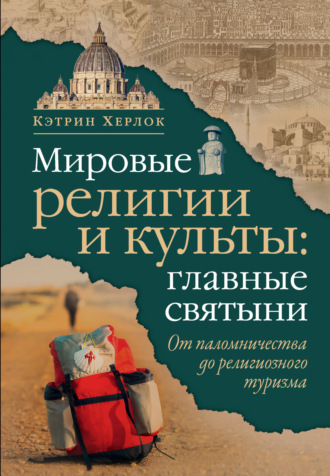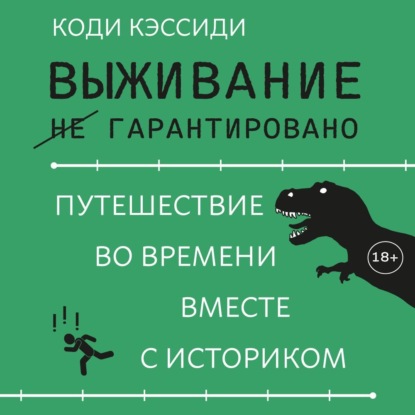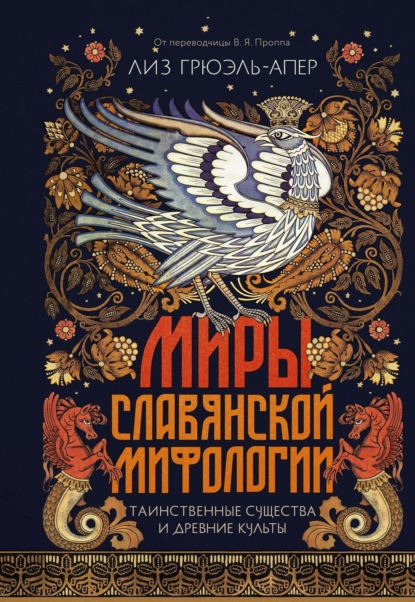
Полная версия
Мировые религии и культы: главные святыни. От паломничества до религиозного туризма
32
Ibid., 54
33
Michael Loewe, Ways to Paradise: The Chinese Quest for Immortality (London: George Allen & Unwin, 1979), 97, 200.
34
‘Record of the Feng and Shan Rites’, in Stephen Bokencamp, ‘Record of the Feng and Shan Sacrifices’, in Religions of China in Practice, ed. Donald S. Lopez Jr (Princeton: Princeton University Press, 1996), 254–60.
35
Howard J. Wechsler, Offerings of Jade and Silk: Ritual and Symbol in the Legitimation of the T’ang Dynasty (New Haven: Yale University Press, 1985), 170–211.
36
Jonathan Karam Skaff, Sui-Tan China and Its Turko-Mongol Neighbors: Culture, Power, and Connections, 580–800, (Oxford: Oxford University Press, 2012), 146; X. L. Woo, Empress Wu the Great (New York: Algora, 2008), 86.
37
Dott, Identity Reflections, 153.
38
N. Harry Rothschild, Empress Wu Zhao and Her Pantheon of Devis, Divinities, and Dynastic Mothers (New York: Columbia University Press, 2015), 115–16, 170.
39
Wechsler, Offerings of Jade and Silk, 184.
40
Хотан – государство, частично занимавшее территории современных Китая и Таджикистана. Было одним из крупных транзитных пунктов Великого шелкового пути. Просуществовало с I века по 1006 год.
41
Skaff, Sui-Tang China, 146.
42
Bingenheimer, ‘Pilgrimage in China’, 349.
43
Ibid., 353
44
Han Lifeng, ‘Communicating Civilization through Rituals: Mount Tai Pilgrimages in Song China, 960–1279’, Journal of Chinese Humanities, 1 (2015), 335–62.
45
Michael G. Chang, A Court on Horseback: Imperial Touring & the Construction of Qing Rule, 1680–1785 (Cambridge, MA: Harvard University Press, 2007), 79–80.
46
Dott, Identity Reflections, 159, 16.
47
Naquin, Gods of Mount Tai, 260.
48
Хань – крупнейшая народность Китая.
49
Dott, Identity Reflections, 165–6.
50
Naquin, Gods of Mount Tai, 260.
51
Dott, Identity Reflections, 175; Jimmy Yu, Sanctity and Self-Inflicted Violence in Chinese Religions, 1500–1700 (Oxford: Oxford University Press, 2012), 168, n. 9.
52
Dott, Identity Reflections, 175; Naquin, Gods of Mount Tai, 198.
53
Запретный город – самый большой дворцовый комплекс в мире (более 720 000 м2) в центре Пекина. Более 500 лет служил резиденцией императоров, сейчас это музей с 70 000 экспонатов.
54
Dott, Identity Reflections, 159.
55
Dott, Identity Reflections, 166.
56
Ibid., 160; Bernbaum, Sacred Mountains, 55.
57
Naquin, Gods of Mount Tai, 261; Dott, Identity Reflections, 150.
58
Kristina Kleutghen, Imperial Illusions: Crossing Pictorial Boundaries in the Qing Palace (Seattle: University of Washington Press, 2015), 111; Elliott, Emperor Quinlong, 41–3.
59
Norman Kutcher, ‘The death of the Xiaoxian Empress: Bureaucratic Betrayals and the Crises of Eighteenth-Century Chinese Rule’, Journal of Asian Studies, 56 (1997), 708–25.
60
Alexander Woodside, ‘The Ch’ien-lung Reign’, in Cambridge History of China: Volume 9, The Ch’ing Dynasty to 1800, Part 1 (Cambridge: Cambridge University Press, 2008), 234–5; Mark C. Elliott, ‘Introduction: The Qianlong Emperor and His Age’, in The Emperor’s Private Paradise: Treasures from the Forbidden City, ed. Nancy Berliner (New Haven: Yale University Press, 2010), 40.
61
Robert E. Harrist, The Landscape of Words: Stone Inscriptions from Early and Medieval China (Seattle: University of Washington Press, 2008), 246.
62
William T. Rowe, China’s Last Empire: the Great Qing (Cambridge, MA: Belknap Press of Harvard University Press, 2009).
63
Ruth A. Freed and Stanley A. Freed, Rites of Passage of the Shanti Nagar (New York: American Museum of Natural History, 1980), 349.
64
Vidya Dehejia, Art of the Imperial Cholas (New York: Columbia University Press, 1990), 79.
65
Steven G. Darian, The Ganges in Myth and History (Delhi: Motilal Banarsidass Publishers, 1978), 11.
66
Fanny Parks, Wanderings of a Pilgrim, in Search of the Picturesque (London: Richardson, 1850), 260.
67
Vikash Singh and Sangeeta Parashar, ‘Hardwar: Spirit, Place, Politics’, Religions, 10 (2019), 10.
68
Knut A. Jacobson, ‘Pilgrimage’, in Hindu Law: A New History of Dharmaśāstra, ed. Patrick Olivelle and Donald R. David, Jr, (Oxford: Oxford University Press, 2018), 335.
69
Christopher Bayly, ‘From Ritual to Ceremony: Death, Ritual and Society in North India since 1600’, in J. Whaley, ed., Mirrors of Mortality: Studies in the Social History of Death (London: Europa Publications, 1981), 163.
70
Samuel Purchas, Purchas his Pilgrimage (London, 1626), 509.
71
Jean de Thévenot, The travels of Monsieur de Thevenot into the Levant (London: J. Clark, 1687), 66.
72
John Matheson, England to Delhi: A Narrative of Indian Travel (London: Longmans Green, 1835), 315.
73
Abdur Rasheed, The Travellers’ Companion: containing a brief description of places of pilgrimage and important towns in India (Calcutta: Superintendent Government Printing, 1907), 20, 29, 30, 34, 39, 55, 80, 96, 123, 129, 235.
74
Jadunath Sarkar, India of Aurangzib compared with the India of Akbar, with extracts from the Khulastatu-t-Tawarikh (Calcutta: Bose Brothers, 1901), 19.
75
R. V. Raper, ‘Narrative of a Survey for the Purpose of Discovering the Source of the Ganges’, Asiatick Researches, 11 (1810), 452; James H. Lochtefeld, God’s Gateway: identity and meaning in Hindu Pilgrimage Place (Oxford: Oxford University Press, 2010), 49–50.
76
System of University Geography Founded on the Works of Malte-Brun and Balbi (Edinburgh: Adam and Charles Black, 1842), 720.
77
Так город Праяградж назывался до XVII века.
78
Rahul Mehrotra and Felipe Vera, eds, Kumbh Mela: Mapping the Ephemeral Megacity (Allahabad: Noiyogi Books, 2015), 11.
79
David Arnold, ‘The Ecology and Cosmology of Disease in the Banaras Region’, in Culture and Power in Banaras: Community, Performance and Environment, 1800–1980, ed. Sandra B. Freitag (Oxford: University of California Press, 1989), 255–6.
80
‘Incidence and Spread of Cholera in India’, British Medical Journal, 1 (1926), 785.
81
‘Spread of Infection from Pilgrim Centres’, Tribune 25 May 1917.
82
Индира Деви (1892–1968) – махарани (жена махараджи) княжества Куч-Бихар, которое в 1949 году стало частью Индии.
83
Report of the Committee appointed by the Uttar Pradesh Government to enquire into the mishap which occurred in the Kumbh Mela at Prayaga on the 3rd February 1954 (Allahabad: Government of India, 1954), 6, 23, 60, 84–5; Dilip Kumar Roy and Indira Devi, Kumbha: India’s Ageless Festival (Bombay: Bharatiya Vidya Bhavan, 1955), 4.
84
Arnold, ‘Ecology’, 231.
85
Robert B. Minturn, From New York to New Delhi by way of Rio de Janeiro, Australia, and China (New York: D. Appleton & Co., 1858), 137
86
Diana L. Eck, Banaras: City of Light (New York: Alfred A. Knopf, 1982), 21.
87
H. R. Nevill, Allahabad: A Gazetteer vol. 23 (Allahabad: Government Press, 1911), 68–9.
88
Варна – одно из четырех главных сословий древнеиндийского общества. Термин не является синонимом слова «каста», это распространенная ошибка.
89
Christopher Justice, Dying the Good Death: The Pilgrimage to Die in India’s Holy City (New York: SUNY Press, 1997), 20.
90
L. P. Vidyarthi, The Sacred Complex of Kashi: A Microcosm of Indian Civilization (New Delphi: Concept, 2005), 129.
91
Li Rongxi, trans., The Great Tang Dynasty Record of the Western Regions (Ann Arbor: University of Michigan Press, 1996), 109.
92
Sudipta Sen, Ganges: the Many Pasts of an Indian River (Yale: Yale University Press, 2019), 3–4.
93
The Travels of Ibn Battuta in Asia and Africa, 1325–1354, trans. H. A. R. Gibb (New York: Augustus M. Kelley, 1969), 193.
94
Burjor Avari, India: The Ancient Past, A History of the Indian Subcontinent from c. 7000 BC to AD 1200 (London: Routledge, 2007), 18.
95
Verinder Grover and Ranjana Arora, eds, Sarojini Naidu: Great Women of Modern India (New Delhi: Deep & Deep Publications, 1993), 230.






